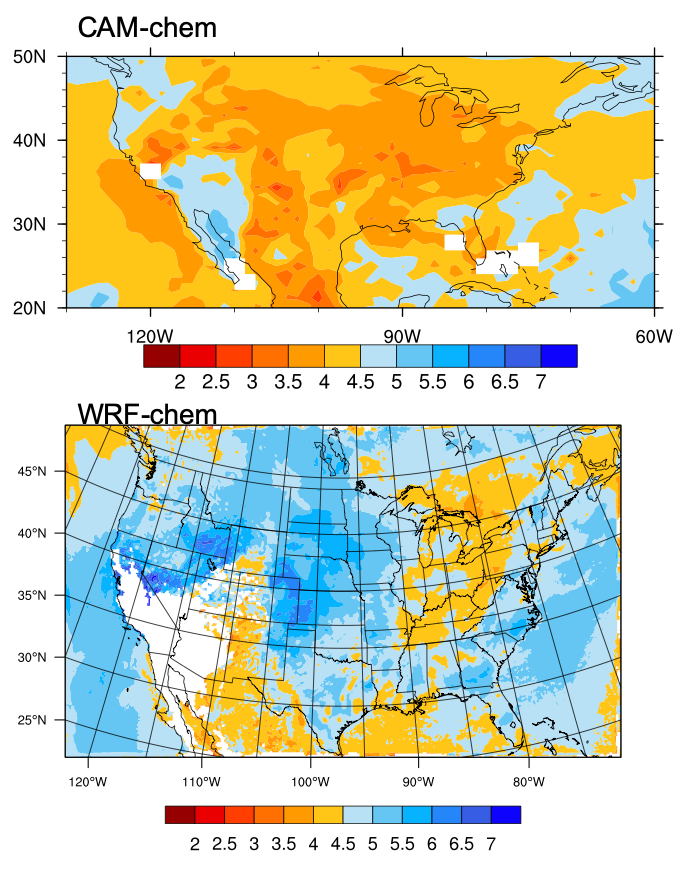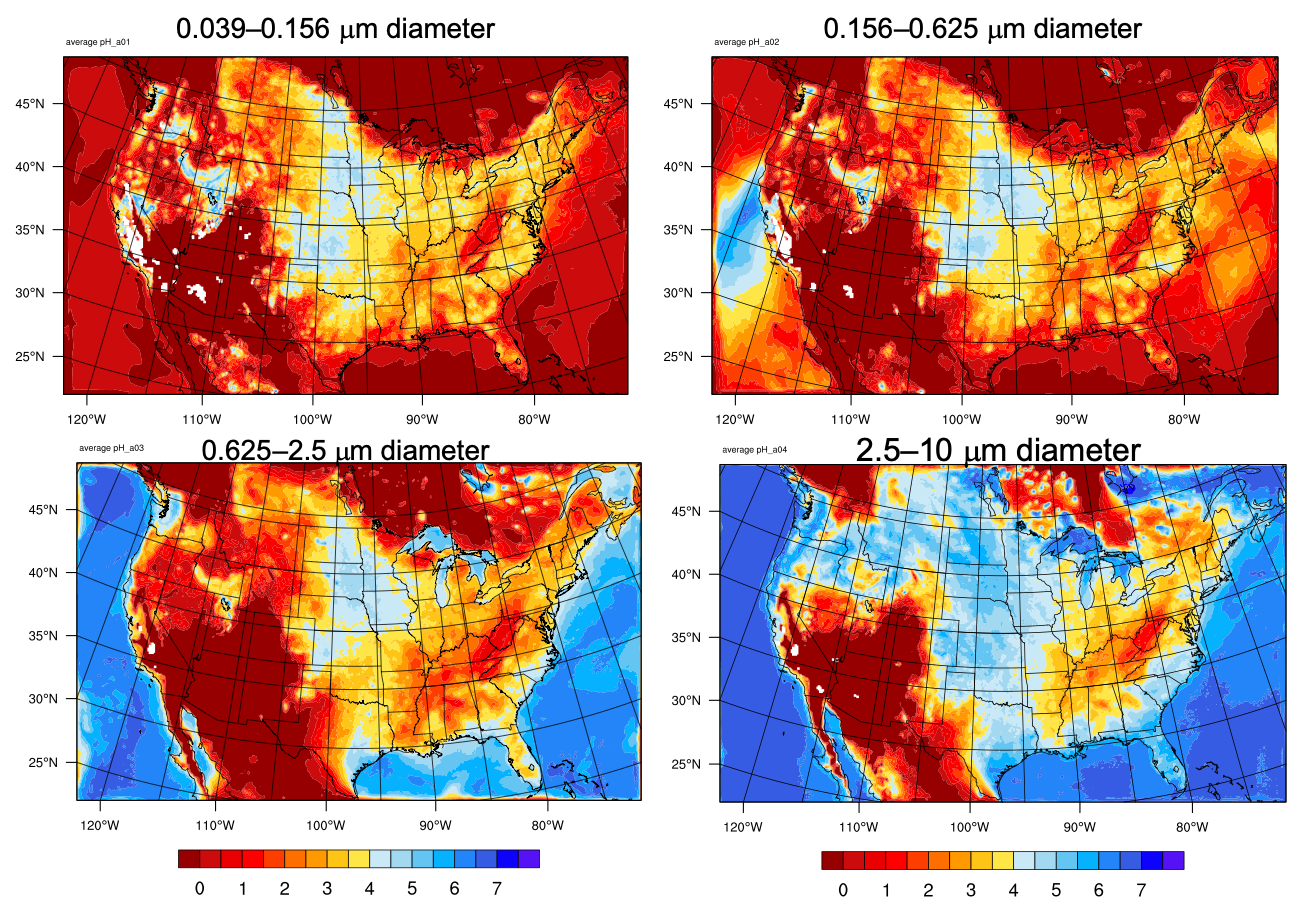Predicting the acidity of aerosols and cloud water
Clouds affect atmospheric composition and chemistry in many ways. For example, during the 1980s, investigations of aqueous-phase sulfur chemistry in clouds pointed to its importance in contributing to acid rain. Understanding the acidity of cloud water and aerosols is also important to know and understand because of the role acidity has on aqueous-phase chemistry, human health, and ecosystems. ACOM scientists contributed to a review on the acidity of aerosols and cloud water (Pye et al., 2019) primarily through providing CAM-chem and WRF-Chem predictions of pH of cloud water (both models) and of aerosols (WRF-Chem).
The CAM-chem and WRF-Chem results show, in Figure 1 below, that cloud water pH is lower (more acidic) in the industrial Ohio River Valley and Intermountain West of the USA, while agricultural regions, with their emissions of ammonia, have higher pH. Aerosol pH is more acidic (Figure 2) than cloud water. Aerosol pH is lower (more acidic) in smaller aerosols than in larger aerosols, mostly because of the higher concentrations in the smaller volumes of small aerosols but also because coarse mode aerosols are comprised of mostly sea salt or dust, which contain additional cations like calcium. Evaluation of these results with observations show agreement with observations within 0.5 pH units, but also indicate the importance of including HCl in gas-phase mechanisms so that sulfate can displace chloride in sea salt aerosols. Cations like iron are also important to include in pH calculations as observations near deserts show high pH values near a value of 6.

References
Pye, H. O. T., Nenes, A., Alexander, B., Ault, A. P., Barth, M. C., Clegg, S. L., Collett Jr., J. L., Fahey, K. M., Hennigan, C. J., Herrmann, H., Kanakidou, M., Kelly, J. T., Ku, I.-T., McNeill, V. F., Riemer, N., Schaefer, T., Shi, G., Tilgner, A., Walker, J. T., Wang, T., Weber, R., Xing, J., Zaveri, R. A., and Zuend, A.: The Acidity of Atmospheric Particles and Clouds, Atmos. Chem. Phys. Discuss., https://doi.org/10.5194/acp-2019-889, in review, 2019.
Contact
Please direct questions/comments about this page to:
Carl Drews
NSF NCAR | Research IT | ACOM
